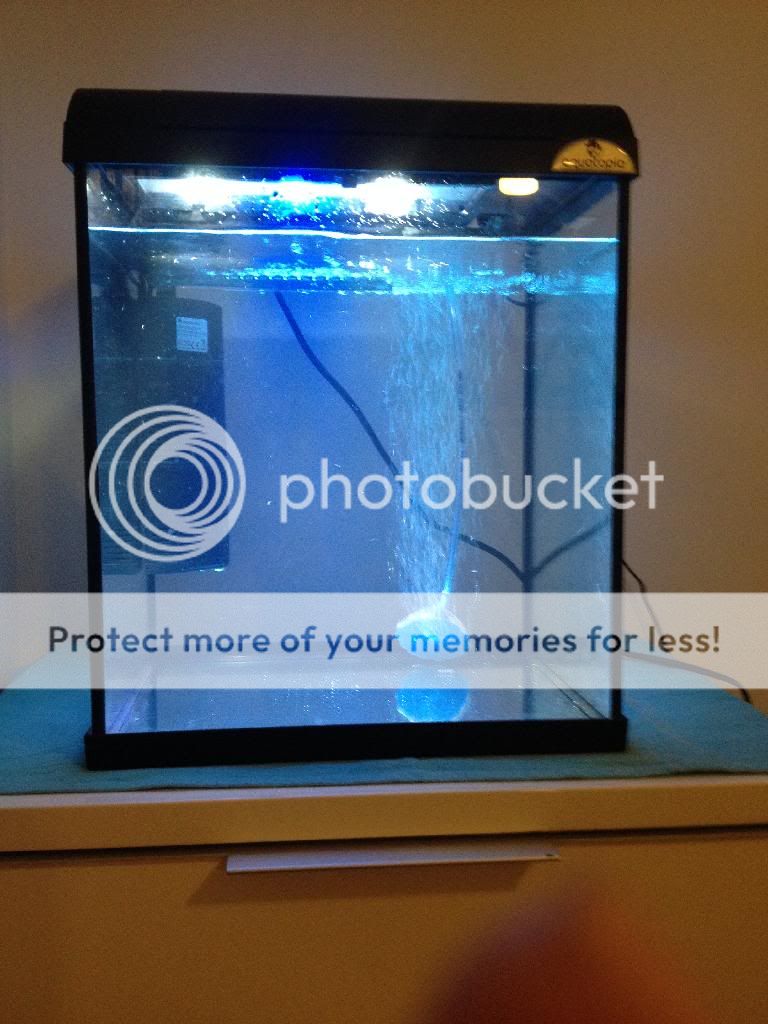Give your friend an equal amount of your media as a swap, you can tell her from me that she can let you have up to a third of her media, and so long as it is replaced, the bacteria will re-colonise the new stuff within a few hours, and she won't notice a difference.
Your pH looks to be around 7.0 (but it's so difficult to tell via a photo). At that pH, you can let your ammonia reading get to 0.5ppm before you need to change water. The reason for this is that your test kit reads "Total Ammonia", which is made up of some highly toxic ammonia, and some relatively harmless ammonium. The higher the pH, the more of it is ammonia.
If you had a higher pH, I would suggest only letting Total Ammonia reading get to 0.25ppm, if you had a lower pH, I would suggest letting the Total Ammonia reading get up to 0.75 or even 1.0ppm.
You need to test your water every day. WIth a relatively low bioload, you will hopefully find that it takes a few days for the Total Ammonia reading to reach 0.5ppm, and when it does, carry out a 50% change.
What's my logic for saying this, when other people say that you must not let ammonia readings get over 0.25ppm? Well, if you keep the Total Ammonia levels right down, it will take longer for the filter to cycle. By keeping a careful balance, you can feed the bacteria a reasonale amount (they enjoy eating ammonium and ammonia equally), whilst still keeping your fish safe.
You will also need to test for nitrite. As soon as you see a nitrite reading (and you may well already have a small amount) you need to add salt to the tank - not aquarium salt, but good old Sodium Chloride table salt. You need to add 25mg per litre of water in your tank. Try to estimate the actual volume of water in there, by judging how much of the tank's nominal capacity is taken up by substrate and decorations.
Why? Well, chlorine in sufficient quantities will stop the nitrite being poisonous, because it will stop it entering the fish's bloodstream.
Remember, though, that when you do a 50% water change, you will also be removing 50% of the salt, so you would need to add half the amount of salt you added originally.
Eventually, you will see your ammonia and nitrite readings getting lower and lower each day. When you have gone for a whole week seeing 0ppm for Total Ammonia and nitrite, then you can consider yourself cycled for the current bioload. Do a large water change, to try to remove as much salt as possible.
You can then add more fish, remembering to increase the bioload by no more than 30% each time. This should allow the bacteria colonies to increase their size quickly, and you should not see any further ammonia and nitrite readings when you test, which you should do daily for a week after adding fish. If you do see increased levels of of either Total Ammonia or nitrite, then follow the above procedure.






 /www.drtimsaquatics.com/resources/how-to-start
/www.drtimsaquatics.com/resources/how-to-start